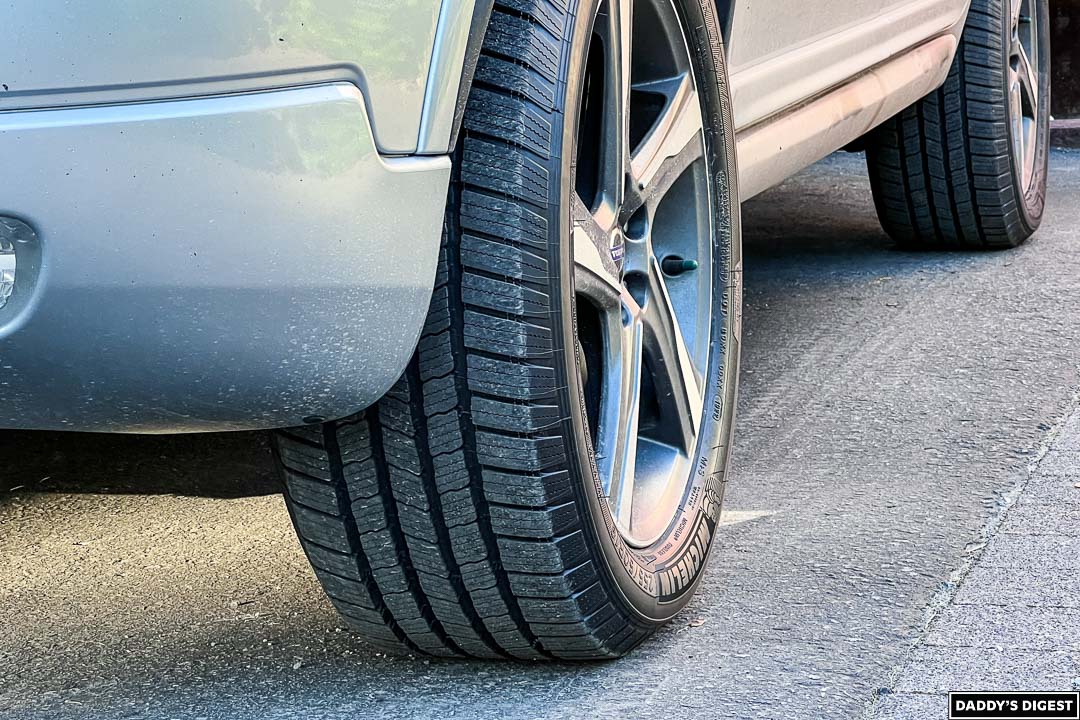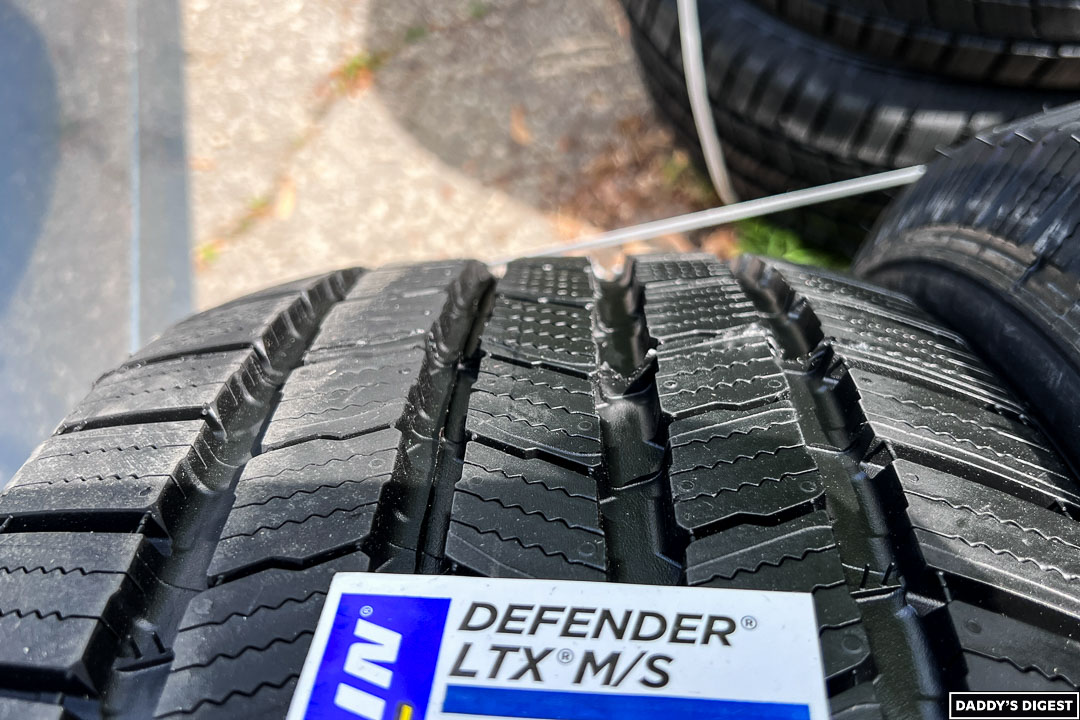After about five months and about 6,000 kilometres (4,000 miles) with the Michelin Defender LTX M/S, Daddy’s Digest is pleased to continue our Daddy’s Tired section with a summer’s end update on this all-season sport utility and light truck tire. Thanks to our friends at Michelin North America, we’re continuing to evaluate the Defender on our 2014 Volvo XC90 R-Design test bed.
Our initial impressions on the tire were generally favourable (see our original review here), and we’re now able to take a deeper dive into the various aspects of selecting the right tire for your family car’s needs. With a mud-and-snow (M+S) rating, it should be sufficient for year-round use in climates that rarely see snow, but for those who see real winter (like us in Toronto, Canada), full winter tires with the Three-Peak Mountain Snowflake (3PMSF) symbol on the sidewall are strongly suggested (and are required by law in jurisdictions such as Quebec).
When it comes to driving dynamics, tire performance can be summarized in the areas of straight-line traction, cornering traction, and handling response. While the first two are pretty objective, handling response can be a more subjective metric. Thankfully, as we’ve mentioned before, the relatively heavy Volvo with firmer R-Design sport suspension is a good lab rat to assess tires with. With this setup, wear can be accelerated, and various issues with ride and handling can potentially be more easily exposed.

Dry Weather Performance
The Michelin Defender LTX M/S performed admirably throughout its Toronto summer on the XC90. In the dry, it proved to be a competent performer and held the road without any complaints. Even when hustled a little harder around on and off-ramps, grip and tire squeal was kept in check.
As a more comfort-oriented tire, softer sidewalls mean that handling response is not as sharp as a performance-oriented tire, and there wasn’t a whole lot that made it back to the steering wheel in terms of feedback from the pavement. For this kind of tire, that’s okay, though – most SUV and light truck tires aren’t necessarily looking for world-class track performance.
Wet Weather Performance
Earlier in my driving career, I remember my father installing some bargain-basement all-season tires on my mother’s 1998 Nissan Altima – which didn’t have an anti-lock braking system. After nearly sliding through an intersection under braking and struggling to find any sort of traction when taking off, I realized that having a good-performing wet-weather tire is a highly underrated thing. Today, I insist that mom and dad have better tires on their vehicles.
Visually, the Michelin Defender LTX M/S has plenty of sipes (those squiggly-looking cuts into the tire) in its tread design, which, like a good pair of boots, prevents cars from slipping and sliding by providing an evacuation channel for water to get out.
In heavy thunderstorms, the XC90 handled acceleration like a pro, and the Haldex-style all-wheel-drive system never had to intervene unless you were too ham-fisted on the throttle. At highway speeds, hydroplaning (also known as aquaplaning) was kept well in check, and our testing required us to seek out large puddles on highway shoulders to see how the tire would behave. All in all, a rock-solid performance.
Comfort
Noise and ride quality are the main aspects involved in the area of tire comfort. With a harder, long-wearing rubber compound and a high load weight rating, the Michelin Defender LTZ M/S is not necessarily the quietest tire at highway speeds but is plenty quiet enough for family cruisers and long-distance road trips. It will be quieter than the vast majority of lower-end tires, that’s for sure.
Despite having harder rubber on its tread blocks, sidewall stiffness is relatively softer on the Defender LTX M/S. Despite having firmer suspension, the Volvo XC90 R-Design didn’t become too stiff or uncomfortable when traversing through pothole-ridden urban roads, and expansion joints on the highway didn’t cause us any issues, either. This performance tends to have an inverse relationship with dry-weather handling response – what we lost with the handling, we gained with comfort.
Treadwear
With a relatively high Uniform Tire Quality Grading (UTQG) rating of 720, the mileage we put on these tires was no sweat in terms of any noticeable wear, despite the Volvo XC90 being known as a car that’s very harsh on tires and brakes. With a 115,000-kilometre (70,000-mile) warranty, the Defender LTX M/S should be viewed as a durable tire.
Additionally, with the test tire’s 255-millimetre section width, the Volvo’s fuel economy was similar to its narrower 235-millimetre winter setup. Usually, wider tires come with more rolling resistance, which hurts fuel economy. Not so in this case!
Michelin Defender LTX M/S: Value and Bottom Line
Compared to others, the Michelin Defender LTX M/S does rank closer to the upper end of the price spectrum, but we can conclude that it’s generally a case of getting what you pay for. Consumers with more limited budgets can probably be served well enough with less costly tires, but there will likely be compromises in any or all of the areas of dry/wet performance, comfort, or tread life.
- Highs: Wet performance, treadwear, ride comfort
- Lows: Slightly loud, not necessarily for the budget conscious

